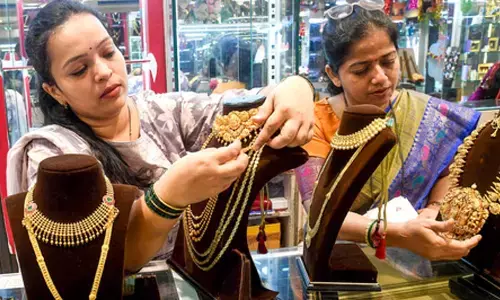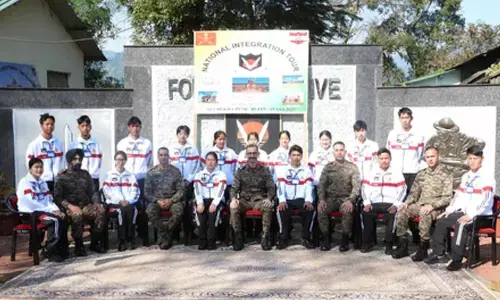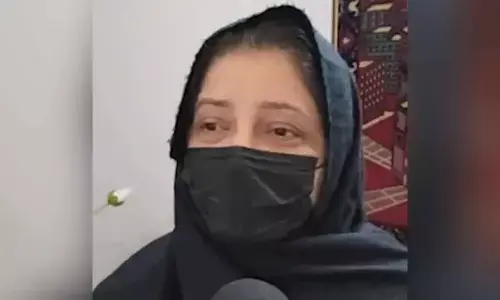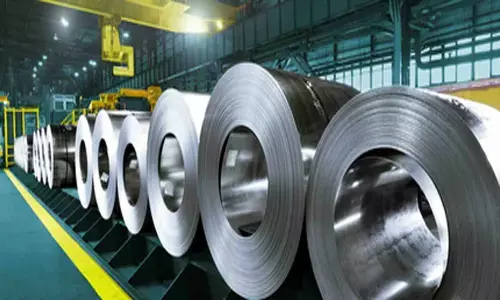Takeaways from Tokyo-2020
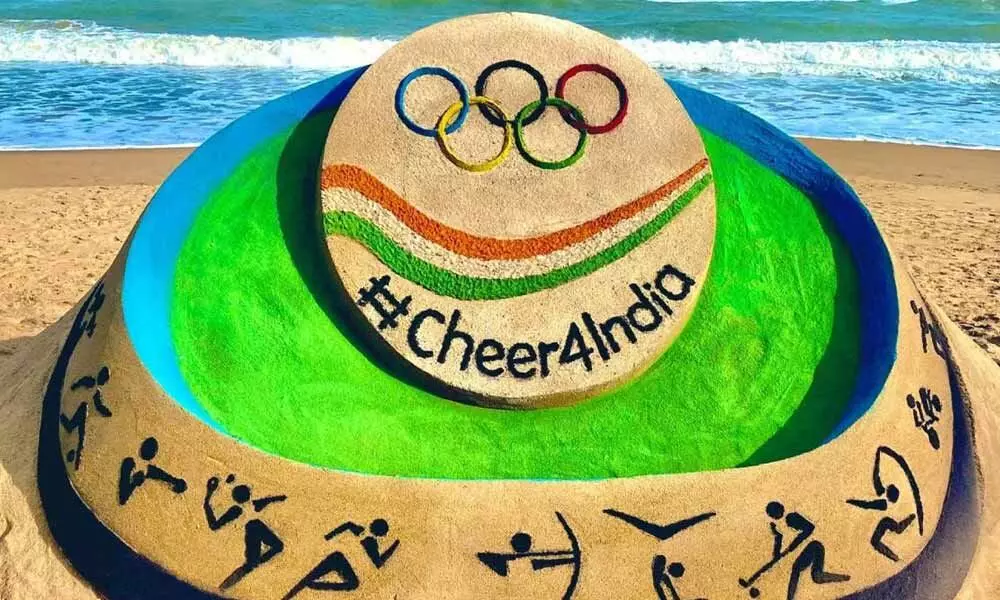
Takeaways from Tokyo-2020
Amidst an impalpable gloom and endless uncertainty, Tokyo-2020, the greatest sports show on earth, managed to give humanity a much-needed digression from a perpetual fear caused by the deadly Covid-19
Amidst an impalpable gloom and endless uncertainty, Tokyo-2020, the greatest sports show on earth, managed to give humanity a much-needed digression from a perpetual fear caused by the deadly Covid-19. Braving all odds triggered by the pandemic, the blue-ribbon athletes delivered a feast for sports-lovers from across 205 countries during the 17-day sports extravaganza.
To be fair, each and every participant of this 32nd edition of summer Olympics is a champion in the manner they quickly acclimatised to the utterly new norm created by the stringent Covid-centric restrictions and spectator-less stadia. For those talented lot out in the middle, it is not just the exuberance of the cheerleaders but even cooing and booing provide the impetus to give their best shot to make it to the podium.
The quadrennial global showpiece with full of goose-bump moments pumped adrenalin and boosted the immunity levels of spectators to survive the biggest global health crisis of the 21st century. On that count, the Tokyo edition will be etched in history as the epitome of human's quest for togetherness and collectivism.
Coming to brass tacks, this time China suffocated the USA till the last minute but the latter retained the table topper position by winning an extra gold than the red-hot dragon. In tune with my curtain-raiser prediction ('Chak De, India!' published in these columns on July 21), javelin thrower Neeraj Chopra and shuttler PV Sindhu made history at Tokyo, the best Olympics outing for India having returned with a medal haul of seven (1G-2S-4B).
The rags-to-riches stories of fellow-medallists, Mirabai Chanu (weightlifting), Ravikumar Dahiya and Bajarang Punia (wrestling) and Lovlina Borgohain (boxing) and the manner hardships were conquered by each member of the hockey team had all the ingredients the go into a Bollywood blockbuster. The emergence of talents like Aditi (golf), Bhavani (fencing) and Nethra (sailing) and their exploits are bound to bolster their respective disciplines back home, in the days ahead. Our archers and shooters dashed our hopes but they are capable of rising to the occasion in Paris, three years down the line.
Admittedly, the Land of the Rising Sun dispelled the darkness clouding the Indian sports horizon much to the joy of 136 crore people, who are cherishing the remarkable top-50 showing as against the 67th spot shared with Mongolia in Rio-2016. Quite apparently, a winning gusto can be knit together by the players, coaches (both India and foreign), parents, sports bodies, officials and the governments. The foreign coaches, who played a vital role in the podium finish of our players, deserve a special mention. Here are my key takeaways from Tokyo-2020.
'Syosan' Japan !
First of all, the host deserves to take a bow for its dogged determination to successfully conduct the Games defying the severity of Covid and the local demand for the cancellation of the already-delayed Games. The Yoshihide Suga government took a great political risk, huge financial burden and numerous pains to fulfill its obligation. The Organising Committee made appropriate use of technology and the dedicated volunteers in accomplishing the task! Happy to see Japan finishing an enviable third in the medals tally with its best ever showing (27G, 14S and 17 B). Syosan (kudos in Japanese) Japan!
In response to the Covid-19 pandemic, the International Olympic Committee (IOC) amended the Olympic motto to 'Citius-Altius-Fortius- Communis' in Latin, which translates to "Faster, Higher, Stronger-Together." IOC President Thomas Bach's observation that such solidarity will help accomplish the 3,000-year-old mission to contribute to peace through sports was bang on and in true Olympic spirit.
A fauji fulfills the Flying Sikh's dream
On the penultimate day of the Games, an Olympic debutant, Subedar Neeraj Chopra, a 23-year-old son of a humble farmer from Panipat, scripted history and effectively ended a century-long wait for an athletic medal. It was a rare spectacle for Indians to watch foreign competitors struggling to come close to a benchmark set by an Indian athlete. The once in a blue moon moment will be cherished for a lifetime by the viewers.
Proving that the first throw of 87.03 metres was no flash of isolated brilliance, Neeraj made the second attempt 87.58 metres to land India the elusive gold. His medal is very special given the fact that two legends-'The Flying Sikh' Milkha Singh in 1960 (Rome) and 'The Payyoli Express' P T Usha in 1984 (Los Angeles) missed a medal by a whisker in 400 meter sprint and 400 meter hurdles respectively. With his spectacular achievement Neeraj fulfilled the dream of Milkha, who succumbed to Covid-19 on June 18. In a touching tribute, which also embodies humility in his hour of glory, Neeraj dedicated the gold to Milkha, who wished to see the tri-colour flying high at Olympics' athletics arena.
This gold is certain to ignite fire in Indian athletes and work for them as a springboard. Though it missed out on a place in the final, the Indian men's 4x400m relay team created a new Asian Record by clocking 3:00.25. This is indeed a good augury for Indian sports.
Hockey renaissance:
Salutes to MP, Odisha
The most momentous occasion came courtesy of the Indian men and women hockey teams. Old-timers sat back and recalled the golden periods when India defined hockey after the men team bagged a bronze, the first medal since 1980. For the first time ever, the women's team entered the semifinals. The Rani Rampal's team did India proud with a valiant effort in the bronze playoff against Rio champion, Great Britain. The team lost narrowly but won the hearts of billions. This return to the good old days should be attributed to the dynamic initiatives of sports-aficionados, Naveen Patnaik, Chief Minister of Odisha and Yashodhara Raje Scindia, Sports Minister of Madhya Pradesh. A former goalkeeper himself, Patnaik pumped in the required resources and provided infrastructure when corporates were unwilling to sponsor the sport that had lost its past glory.
An enthusiastic sports lover Yashodhara built a world-class hockey academy in her home turf, Gwalior, exclusively for women in 2006 and produced a good number of players to represent the nation. She went a step ahead and impressed upon corporates the need to provide employment to sports achievers.
During my stint with the Administrative Staff College of India (ASCI), I studied a wonderful sports scheme (Hum Choo Lenge Aasman) launched by the MP government under her stewardship and we extended help to some other States to replicate the model as part of a Union government project.
The two leaders proved beyond doubt that political will is necessary to promote sports. The Telangana government, which lacks a sports policy till date, should take a cue from such initiatives and help provide platforms to local talent to exhibit their skills on the global stage. Merely announcing bonanzas for medal winners will serve no purpose.
Modi and the TOP Scheme
Even BJP-bashers should appreciate the positive attempts made by the Narendra Modi government in promoting sports. The Target Olympic Podium Scheme (TOPS), launched in 2014, has been aiding the country's medal hopes with logistical and financial assistance so that they can deliver the goods in Olympics and other international events.
The Mission Olympic Cell (MOC) was constituted under the Sports Authority of India (SAI). Olympic silver medallist Colonel Rajyavardhan Singh Rathore tried his best to bring in transparency in sports bodies when he was Minister of State (independent charge) for Sports. Credit should also go to his predecessor Kiren Rijju for playing a vital role in encouraging sports culture in the country.
The noticeable change towards sports in the government can be seen from Modi's close interaction with the Tokyo-bound athletes and their family members. The pep-talk in which he underlined that they should not take pressure of the expectations was indeed a morale-booster.
He made it a point to personally talk to the Olympic medallists soon after their victory. He sounded sincere when he had a tele-talk with the crestfallen hockey women players. If all the Chief Ministers take sports seriously, India can improve its medals tally from Paris-2024 onwards.
Play and study: Kiesenhofer
Here is an eye-opener for those who think that sports hamper studies. Meet Anna Kiesenhofer, the Austrian gold medalist in cycling. The 30-year-old studied mathematics at the Technical University of Vienna (2008–11); completed her Master's degree at University of Cambridge (2011–12); earned her PhD from Polytechnic University of Catalonia and is presently a postdoctoral researcher at Ecole Polytechnique Federale de Lausanne (EPFL).
Many a research shows that sportspersons are at their natural best in studies and creative thinking too. 'No play, all studies' has a negative impact on the health, both physical and mental, of our children and we should stop manufacturing couch potatoes, obese kids and idlers.
Our golden boy Neeraj, who had earned the nickname 'motu' for his stout physique and sluggishness in his childhood, was pushed by his parents to go to a stadium to shed the extra flesh. The stadium, its electrifying ambience and athletes' workouts inspired the kid to take up the sport that was to bring glory to India. Make it a habit to go to playgrounds with your children on a daily basis; who knows, you may have an Olympic material in your house!
(The author, a PhD in Communication and Journalism, is a senior journalist, journalism educator and communication consultant)
(The opinions expressed in this column are that of the writer. The facts and opinions expressed here do not reflect the views of The Hans India)









